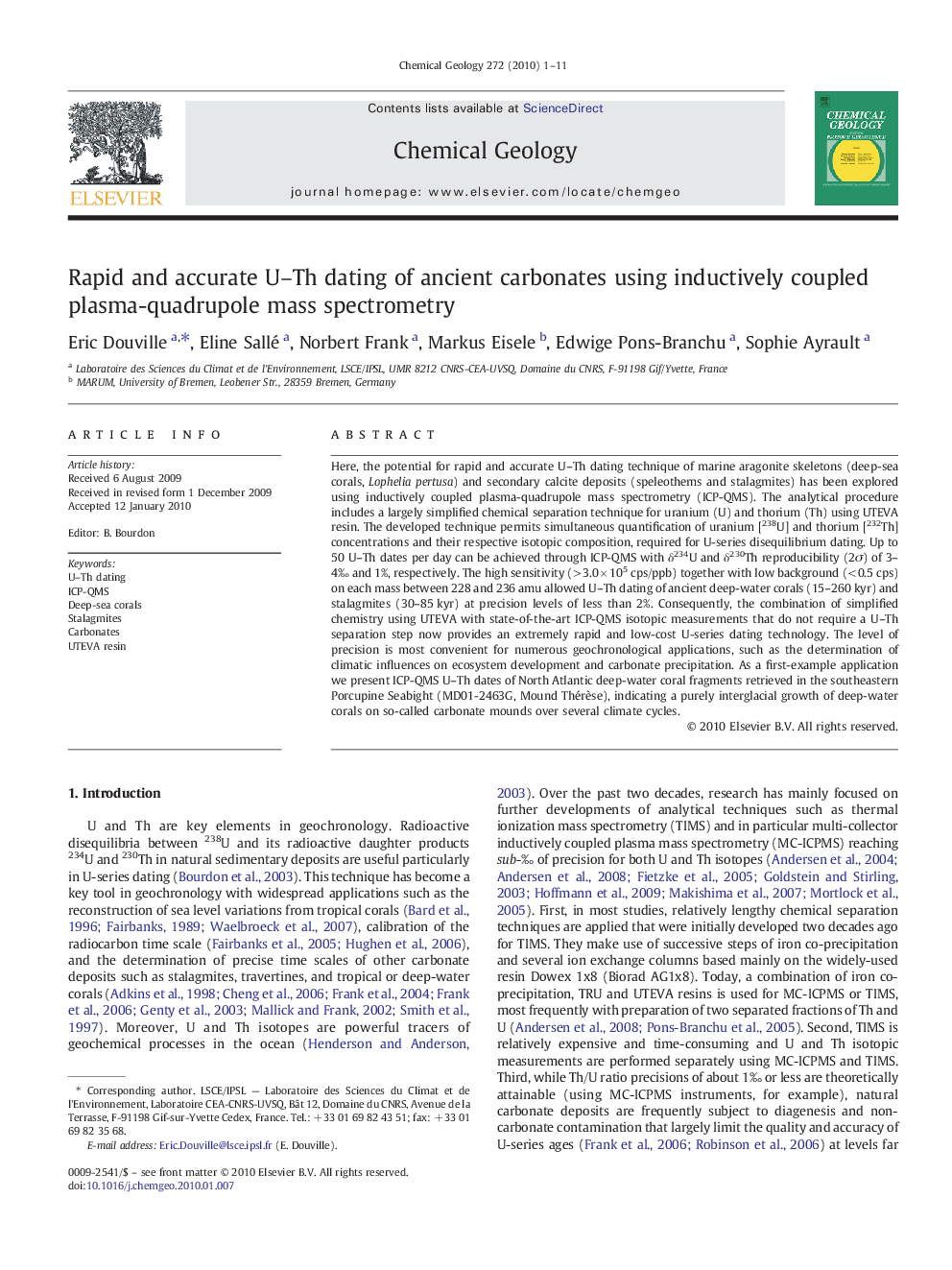| Article ID | Journal | Published Year | Pages | File Type |
|---|---|---|---|---|
| 4700086 | Chemical Geology | 2010 | 11 Pages |
Here, the potential for rapid and accurate U–Th dating technique of marine aragonite skeletons (deep-sea corals, Lophelia pertusa) and secondary calcite deposits (speleothems and stalagmites) has been explored using inductively coupled plasma-quadrupole mass spectrometry (ICP-QMS). The analytical procedure includes a largely simplified chemical separation technique for uranium (U) and thorium (Th) using UTEVA resin. The developed technique permits simultaneous quantification of uranium [238U] and thorium [232Th] concentrations and their respective isotopic composition, required for U-series disequilibrium dating. Up to 50 U–Th dates per day can be achieved through ICP-QMS with δ234U and δ230Th reproducibility (2σ) of 3–4‰ and 1%, respectively. The high sensitivity (> 3.0 × 105 cps/ppb) together with low background (< 0.5 cps) on each mass between 228 and 236 amu allowed U–Th dating of ancient deep-water corals (15–260 kyr) and stalagmites (30–85 kyr) at precision levels of less than 2%. Consequently, the combination of simplified chemistry using UTEVA with state-of-the-art ICP-QMS isotopic measurements that do not require a U–Th separation step now provides an extremely rapid and low-cost U-series dating technology. The level of precision is most convenient for numerous geochronological applications, such as the determination of climatic influences on ecosystem development and carbonate precipitation. As a first-example application we present ICP-QMS U–Th dates of North Atlantic deep-water coral fragments retrieved in the southeastern Porcupine Seabight (MD01-2463G, Mound Thérèse), indicating a purely interglacial growth of deep-water corals on so-called carbonate mounds over several climate cycles.
